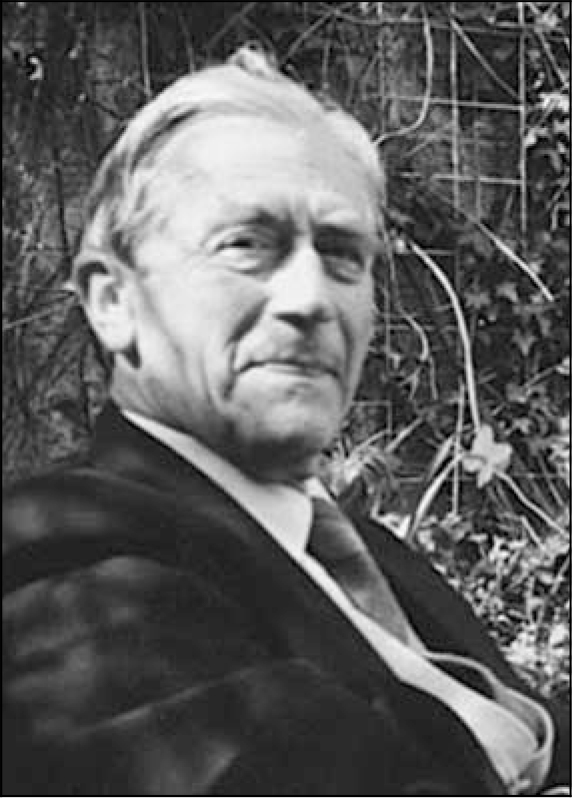Formerly Consultant Psychiatrist, Ingrebourne Centre, St George's Hospital, Hornchurch
An important phase in the history of the therapeutic communities movement is represented by a number of psychiatrists who adopted this approach in the regeneration of the mental hospitals in the early post-war decades. Richard Crocket was among them. He created the Ingrebourne Centre in 1954 and remained its director until 1977.

Crocket was born in 1914 at Bridge of Weir and qualified, MB, ChB, in 1937 at Glasgow. After a surgical house job, he worked until 1940 at Glasgow Royal Mental Hospital (later named Gartnavel), where a number of his colleagues later became distinguished psychoanalysts and ‘… my subjectivity came home to roost’. In 1939 he took the London DPM and the FRFPS in 1941 with mental illness as special subject. He retained a life-long, deep affection for Scotland, where he kept a holiday home for many years.
In 1940 he spent a year as locum psychotherapist at the Cassel Hospital (then in Kent) and from 1941 he served for 5 years in the Royal Air Force (RAF). During this time he published his first paper (with R. D. Gillespie) on neurosis among RAF ground crew. On demobilisation, he was briefly registrar at the London British Postgraduate Medical School and then assistant physician at St Andrews Hospital, Northampton. Following this, he returned to Scotland to spend a year working with Professor D. K. Henderson in Edinburgh. From 1950 to 1954 he was tutor in psychiatry at the University of Leeds, with the associated senior registrar post at the Leeds General Infirmary. His publications at this time were in general hospital psychiatry and psychosomatics, and he retained an interest in these fields after he moved, at the age of 40, to his first consultant job and to the centre of gravity of his professional career.
With a strong psychodynamic bias to his psychiatry, he became Consultant in Psychological Medicine jointly to Oldchurch Hospital, Romford, Essex and St George's Hospital, Hornchurch. The latter was to become the centre for his major contributions to theory, practice and research in the therapeutic community. He took charge of a traditional acute psychiatric unit ‘Ward 3G’, later renamed the Ingrebourne Centre (after the name of a stream running through the grounds). It had previously been an offshoot of Warley Hospital but ‘… its small size and distance from the parent hospital made it a problem child.’ Crocket set about liberalising the regime, but it retained for a time the use predominantly of one-to-one methods of treatment, including brief experiments with the therapeutic use of hallucinogenic drugs, and experiments with small groups. However, in 1957 the arrival from Dingleton of a senior hospital medical officer, a fellow Scot, Hamish Anderson, stimulated the addition of large group methods and the rapid evolution of a fully-fledged therapeutic community. By November of that year Crocket was lecturing to the Runwell Hospital Medical Society on the therapeutic community approach in a neurosis centre - a relatively early example of the adoption of the method outside specialised hospitals such as the Henderson or the Cassel.
He was an inventive thinker who always claimed that his approach to what he termed the ‘psychotherapeutic’ community, based upon ‘ real’ and ‘abstracted’ social networks had, rather than by simply copying models available elsewhere, evolved from experience within his own group of in-patients, day patients and attenders at the psychotherapeutic club at Ingrebourne. But he was generous in sharing his theoretical insights and practical experience with others, both internationally and at home, particularly among the group of psychiatrists who by the late 1960s had formed the Therapeutic Community Round Table (which in 1972 became the Association of Therapeutic Communities). He wrote incisively and, in the later part of his career, exclusively on the therapeutic community; his collected papers are now deposited at the Planned Environmental Therapy Trust archive.
Crocket was a life-long enthusiastic supporter of the Association of Therapeutic Communities, not least in relation to research. Early into this field, in 1961 he and Christine Hassall reported an empirical evaluation of the treatment and results in a cohort of 68 patients at Ingrebourne between April 1957 and March 1959. The results are one of the first examples of providing an evidence base for the therapeutic community model and are available in his MD thesis (Glasgow, 1965). He was elected FRCP (Ed) in 1962, FRCP (Glas) in 1970 and FRCPsych in 1971.
There is a brief and rather sad coda to Crocket's career in the NHS. Early in 1977 he accepted appointment as locum medical director of the Paddington Day Hospital. The intention was to effect in essence a rescue operation in a therapeutic community located within a larger neurosis centre that had fallen into complex difficulties involving serious misapplications of psychoanalytic ideas to the regime. Although proposing rational plans to recover the situation, these proved unavailing and he retired, disappointed, on the closure of the unit in 1979.
He died on 3 December 2006.



eLetters
No eLetters have been published for this article.